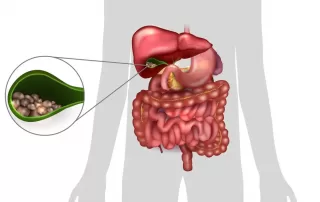Gallstones are solid particles that form in the gallbladder, a small organ beneath the liver that stores bile. Bile aids in digesting fats, and when it contains too much cholesterol or bilirubin, or if the gallbladder doesn’t empty properly, gallstones can form. There are two main types of gallstones: cholesterol stones, which are more common, and pigment stones, which form when there is excess bilirubin.
Symptoms of gallstones may include sudden and intense pain in the upper right abdomen or center of the abdomen, back pain between the shoulder blades, or pain in the right shoulder. These episodes, known as gallstone attacks, can last from a few minutes to several hours. Some people, however, may have “silent” gallstones that do not cause symptoms.
Risk factors for developing gallstones include obesity, a high-fat diet, rapid weight loss, pregnancy, certain medical conditions like diabetes, and genetics. Women, especially those who are pregnant, overweight, or over the age of 40, are at a higher risk.
Diagnosis typically involves imaging tests such as an ultrasound or CT scan. Treatment options vary based on the severity of symptoms. Asymptomatic gallstones might not require treatment, while symptomatic cases often necessitate surgery to remove the gallbladder, known as a cholecystectomy. Non-surgical options include medications to dissolve gallstones, though these are less commonly used.


